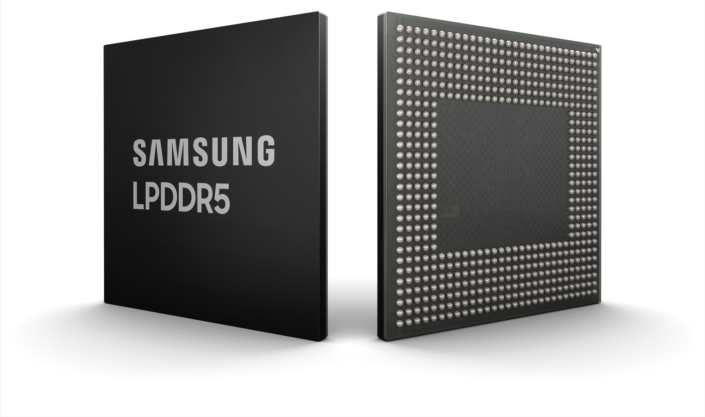Samsung has announced the completion of its new 8-gigabit LPDDR5 DRAM chip, raising data rates up to 6.4Gbps-per-pin. While mass production is seemingly a little way off yet, the new memory is expected to help bolster artificial intelligence (AI) technology in smartphones within the next few years.
Beyond its 16Gb GDDR6 DRAM that rolled out in December 2017 and 16Gb DDR5 DRAM that subsequently followed this February, the LPDDR5 DRAM continues Samsung’s new 10-nanometre-class process. Its target of up to 6.4Gbps-per-pin is already 1.5 times faster than the current LPDDR4(X) standard. Samsung even claims that its increased transfer rate can send 51.2GB of data in a second, equating to 14 full-HD videos at 3.7GB each.
While most high-end smartphones sport 64-bit memory buses, Samsung has confirmed that its LPDDR5 has a single 32-bit (x32) memory channel, with 16 banks. It also doesn’t change the 16n prefetch seen in LPDDR4, which makes its claimed statistics all the more mysterious.
“This development of 8Gb LPDDR5 represents a major step forward for low-power mobile memory solutions,” said Jinman Han, senior vice president of Memory Product Planning & Application Engineering at Samsung Electronics. “We will continue to expand our next-generation 10nm-class DRAM lineup as we accelerate the move toward greater use of premium memory across the global landscape.”
Power efficiency is a core aspect of LPDDR5, saving mobile batteries with a “deep sleep mode” that allows it to reduce power consumption by up to half of LPDDR4(X) in idle mode. It also adjusts its voltage on-the-fly to correspond with application processors when in active mode.
Samsung is aiming to produce the memory chips in line with customer demand, meaning that it will likely try to implement it in the next generation of smartphones. It’s entirely possible that this might make it in time for the tentatively titled Galaxy S10, however this has been in the works for quite some time.
KitGuru Says: This is impressive stuff that will certainly help shape the future of mobile-based artificial intelligence. Just how Samsung pulls off these new feats given the supposedly unremarkable changes to its design remains to be seen, however.
 KitGuru KitGuru.net – Tech News | Hardware News | Hardware Reviews | IOS | Mobile | Gaming | Graphics Cards
KitGuru KitGuru.net – Tech News | Hardware News | Hardware Reviews | IOS | Mobile | Gaming | Graphics Cards



